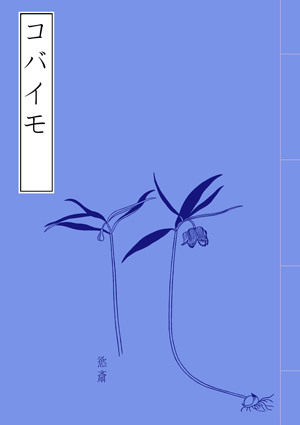NEWS 2014
Kobaimo; Japanese Endemic Fritillaria
Royal Horticultural Society
Shades of Autumn London Show
London
United Kingdom
21-22 October 2014
Photographic Exhibit
Nine Japanese endemic Fritillaria printed on rice paper and presented as late-Edo period woodblock prints. The images pay tribute to Iinuma Yokusai (1783-1865) who's great pioneering work Somoku-dzusetsu [an iconography of plants indigenous to cultivated in, or introduced into Nippon] was the first modern botanical book in Japan. Yokusai’s illustration of kobaimo [コバイモ] an endemic Japanese Fritillaria was subsequently described in Europe by Friedrich Miquel from a copy of his book as Fritillaria japonica.
COMMENTARY
Iinuma Yokusai publication forms the main visual motif of the exhibit using ink-jet printed photographic rice paper constructed in the style of the original. As a second theme the Japanese word for photography, shashin, is also introduced, a word adopted from an earlier use by herbalists. The staging therefore pays homage to Yokusai’s achievements but also allowed the layering of several other themes.
As books are structured in different ways in Japan and in the West the images displayed reflect this difference. By not creating a distinct start or finish the images can be viewed either right to left or left to right playing on ideas of East and West. The appearance is traditional Japanese but the material and digital imaging technologies are contemporary.
Primarily the images are created using lens based media but the ten images are a composite of 102 photographs. Using digital techniques these were stitched or layered together cleaned of unwanted elements like pollen that had brushed onto other parts of the flowers and other out of focus or missing parts imagined using a graphic pad and pen. All the images were printed with a pale yellow background creating an aged appearance. The result is perfectly presented plants but also a truth that is subjective. This is a further play between East and West, between photography which has been manipulated almost from its conception in the West to the adoption of Western ideas in the East and the different relationships that emerge, specifically in this case the Japanese idea that photographs represents truth. One of the specimens was given a new Japanese vernacular name and as the image appeared distinct no one spotted that it had the same Latin name as its neighbour and this highlighted the language divide.
Finally, this was a creation of both the lens and the hand therefore blurring the boundaries of photograph. In the post-film era, were most photographs are created on multi-function mobile devices, pre-set algorithms alter images microseconds after the moment of capture. This ‘in camera’ alteration is not regarded as ‘digital manipulation’ although it clearly has an affect on the image file. This returns to the theme of tradition and modernity, in the on going digital transformation of society have our concept of image creation kept abreast of these technological changes.




